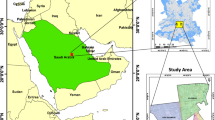Abstract
With the continuous advancement of science and technology, the improvement of mobile terminal hardware performance and the large-scale popularization of smart phones have brought new experiences and methods to surveying and mapping work. This article mainly studies the application of remote sensing image processing technology based on mobile augmented reality technology in surveying and mapping engineering. First, perform grayscale processing on the image in the experiment, then remove the noise in the image and smooth the image through the median filter method and finally use the Canny operator to perform edge detection to obtain a binarized image containing only the target object, and this is done by image feature extraction. After using three-dimensional scanning modeling to extract the image feature points, the target manager is used for sample analysis. Obtain the projection matrix through the interface, and then perform coordinate conversion to complete the positioning of the target scene. In this paper, the BRISK feature point detection algorithm with fast speed and small calculation is used to detect the target, and SVM is used for remote sensing feature classification. Experimental data show that the recognition success rate of the algorithm is 84%. The results show that mobile augmented reality technology and remote sensing image processing technology can improve the efficiency and accuracy of surveying and mapping engineering, and have strong ease of use and stability.








Similar content being viewed by others
References
Al-Ani M, Abdulrazzaq AH (2019) The feasibility of implementing augmented reality technology for delivering library services: a case study at the University of Bahrain. IJCDS J 8(4):367–373
Bos AS, Herpich F, Kuhn I et al (2019) Educational technology and its contributions in students’ focus and attention regarding augmented reality environments and the use of sensors. J Educ Comput Res 57(7):1832–1848
Chen C, Li W, Gao L et al (2018) Special issue on advances in real-time image processing for remote sensing. J Real-Time Image Proc 15(3):435–438
Desierto AJR, Recia ASA, Arroyo JCT et al (2020) GoonAR: a bilingual children storybook through augmented reality technology using unity with Vuforia framework. Int J Adv Trends Comput Sci Eng 9(3):3681–3686
Dyulicheva YY (2020) About the usage of the augmented reality technology in mathematics and physics learning. Open Educ 24(3):44–55
Feng XU, Cheng HU, Jun LI et al (2020) Special focus on deep learning in remote sensing image processing. Sci China Inf Sci 63(4):1–2
Harefa E, Kristiyanto WH, Rondonuwu FS (2019) Visualization of conduction heat transfer using augmented reality technology. Indian J Sci Technol 12(21):1–6
Jiang L, Niu T, Xu Z et al (2017) Integrating encryption and marking for remote sensing image based on orthogonal decomposition. IEEE J Sel Top Appl Earth Obs Remote Sens 8(5):2232–2239
Kaji S, Kolivand H, Madani R et al (2017) Utilizing “augmented reality” technology to illustrate residential open space greenery. Int J Appl Eng Res 12(16):6022–6028
Kapalo KA, Bockelman P, Laviola JJ (2018) “Sizing up” emerging technology for firefighting: augmented reality for incident assessment. Proc Hum Factors Ergon Soc Annu Meet 62(1):1464–1468
Kelpien M (2020) The usage of books containing augmented reality technology in preschool education. Pedagogika 138(2):150–174
Lei S, Shi Z, Zou Z (2017) Super-resolution for remote sensing images via local-global combined network. IEEE Geosci Remote Sens Lett 14(8):1243–1247
Liu S, Liu M, Li P et al (2017) SAR image denoising via sparse representation in Shearlet domain based on continuous cycle spinning. IEEE Trans Geosci Remote Sens 55(5):2985–2992
Patricia S (2016) Understanding the conics through augmented reality. Eurasia J Math Sci Technol Educ 13(1):341–354
Pipattanasuk T, Songsriwittaya A (2020) Development of an instructional model with augmented reality technology for vocational certificate students. Int J Instr 13(3):539–554
Rauschnabel PA, Hein DWE, He J et al (2016) Fashion or technology? A fashnology perspective on the perception and adoption of augmented reality smart glasses. i-com 15(2):179–194
Savitskaya TE (2019) Augmented reality technology in library practice. Bibliotekovedenie Russ J Libr Sci 68(3):249–257
Tuna C, Unal G, Sertel E (2018) Single-frame super resolution of remote-sensing images by convolutional neural networks. Int J Remote Sens 39(8):2463–2479
Vargas-Cuentas NI, Roman-Gonzalez A, Alva Mantari A et al (2018) Chagas disease study using satellite image processing: a Bolivian case. Acta Astronaut 144(3):216–224
Vaughn J, Lister M, Shaw RJ (2016) Piloting augmented reality technology to enhance realism in clinical simulation. CIN Comput Inform Nurs 34(9):402–405
Wu F-Y (2017) Remote sensing image processing based on multi-scale geometric transformation algorithm. J Discret Math Sci Cryptogr 20(1):309–321
Wu C, Zhang L, Zhang L (2016) A scene change detection framework for multi-temporal very high resolution remote sensing images. Signal Process 124(7):184–197
Yaremenko AI, Lysenko AV, Ivanova EA et al (2020) Augmented reality technology for auricular reconstruction in the treatment of microtia. Cell Ther Transplant 9(2):78–82
Yilmaz RM (2016) Educational magic toys developed with augmented reality technology for early childhood education. Comput Hum Behav 54(1):240–248
Yim YC, Chu SC, Sauer PL (2017) Is augmented reality technology an effective tool for e-commerce? An interactivity and vividness perspective. J Interact Mark 39(8):89–103
Zhong Y, Weng W, Li J et al (2019) Collaborative cross-domain k NN search for remote sensing image processing. IEEE Geosci Remote Sens Lett 16(11):1801–1805
Acknowledgements
This work was supported by National Natural Science Foundation of China. (Research on theory and technology of Intelligent self-organizing Network for large-scale UAV cluster, No.61931011)
Author information
Authors and Affiliations
Corresponding authors
Ethics declarations
Conflict of interest
The authors declare that they have no conflict of interest.
Human and animal rights
This article does not contain any studies with human participants performed by any of the authors.
Additional information
Communicated by Suresh Chandra Satapathy.
Publisher’s Note
Springer Nature remains neutral with regard to jurisdictional claims in published maps and institutional affiliations.
Rights and permissions
About this article
Cite this article
Lu, W., Zhao, L. & Xu, R. Remote sensing image processing technology based on mobile augmented reality technology in surveying and mapping engineering. Soft Comput 27, 423–433 (2023). https://doi.org/10.1007/s00500-021-05650-3
Published:
Issue Date:
DOI: https://doi.org/10.1007/s00500-021-05650-3




